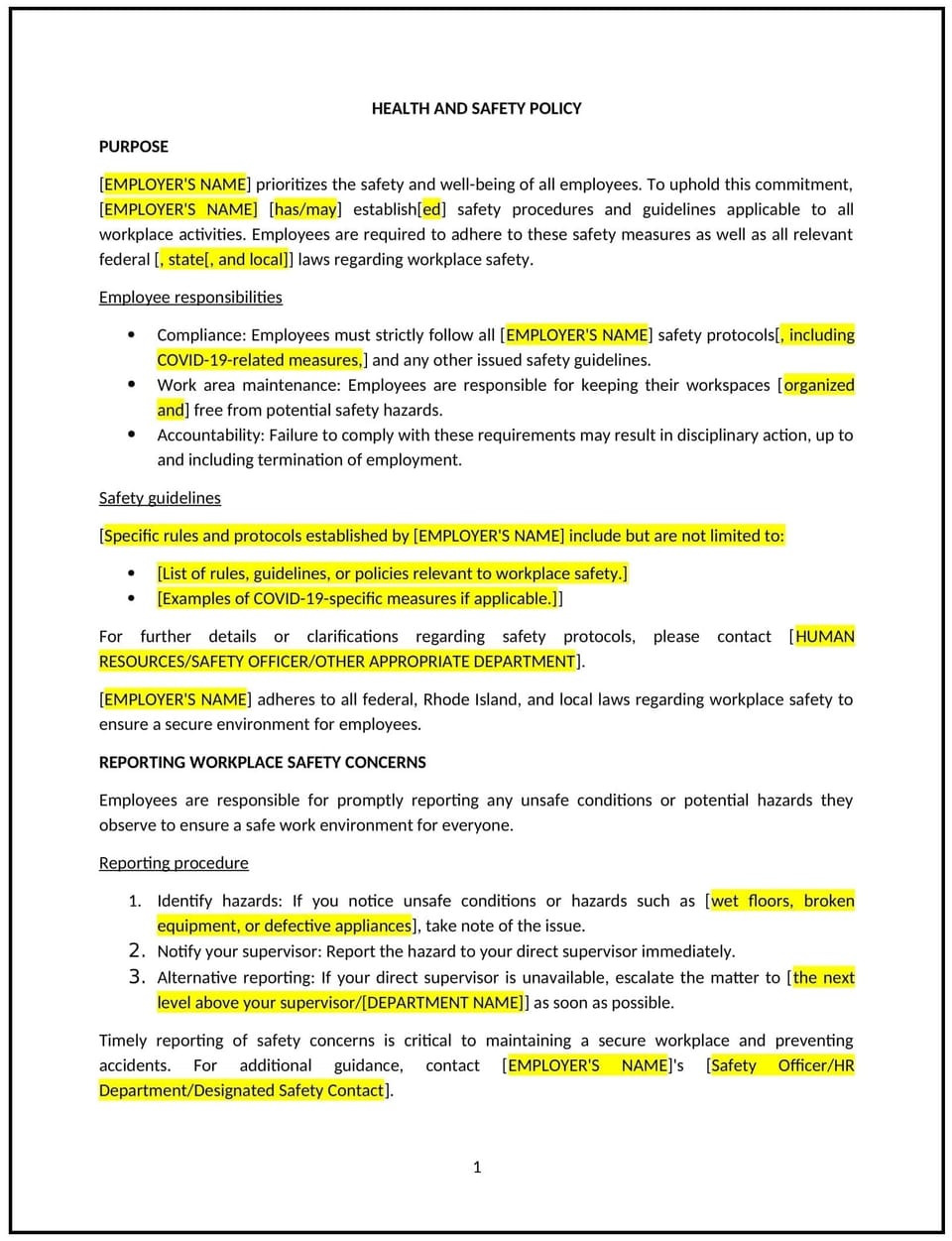Health and safety policy (Rhode Island): Free template

Health and safety policy (Rhode Island)
This health and safety policy is designed to help Rhode Island businesses maintain a safe and healthy workplace. It outlines procedures for identifying hazards, preventing accidents, and responding to emergencies.
By adopting this policy, businesses can protect employees, comply with OSHA regulations, and align with best practices for workplace safety.
How to use this health and safety policy (Rhode Island)
- Identify hazards: Conduct regular risk assessments to identify potential workplace hazards.
- Establish safety procedures: Outline steps for preventing accidents, such as equipment maintenance and safety training.
- Address emergencies: Provide guidelines for responding to incidents, such as fires or medical emergencies.
- Train employees: Educate staff on safety protocols and their roles in maintaining a safe workplace.
- Review and update: Assess the policy annually to ensure it aligns with evolving business needs and safety standards.
Benefits of using this health and safety policy (Rhode Island)
This policy offers several advantages for Rhode Island businesses:
- Protects employees: Ensures a safe and healthy work environment, reducing the risk of injuries or illnesses.
- Ensures compliance: Aligns with OSHA regulations and other safety standards, minimizing legal risks.
- Enhances productivity: Reduces downtime caused by accidents or unsafe conditions.
- Builds trust: Demonstrates to employees and stakeholders that the business prioritizes safety.
- Aligns with best practices: Supports adherence to workplace safety standards.
Tips for using this health and safety policy (Rhode Island)
- Communicate the policy: Share the policy with employees and include it in the employee handbook.
- Provide training: Educate employees on safety protocols and emergency procedures.
- Monitor compliance: Regularly review workplace conditions to ensure adherence to the policy.
- Address issues promptly: Take corrective action if hazards or unsafe practices are identified.
- Update regularly: Assess the policy annually to ensure it aligns with evolving business needs and safety standards.
Q: How does this policy benefit businesses?
A: By adopting this policy, businesses can protect employees, ensure compliance, and enhance productivity.
Q: What types of hazards are covered under this policy?
A: The policy applies to physical, chemical, and ergonomic hazards, as well as emergency situations.
Q: Who is responsible for enforcing this policy?
A: HR, safety officers, and managers are typically responsible for ensuring compliance.
Q: How should businesses handle safety violations?
A: Businesses should address violations promptly and take corrective action, such as retraining or disciplinary measures.
Q: How often should businesses review this policy?
A: Businesses should review the policy annually or as needed to ensure it aligns with evolving business needs and safety standards.
This article contains general legal information and does not contain legal advice. Cobrief is not a law firm or a substitute for an attorney or law firm. The law is complex and changes often. For legal advice, please ask a lawyer.


